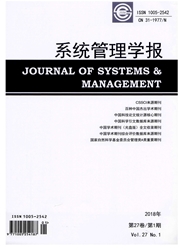

 中文摘要:
中文摘要:
在线渠道为制造商增加销售额、降低成本提供了机会,同时也导致了制造商和零售商之间的冲突,冲突的焦点是价格竞争。针对单个制造商和零售商构成的渠道,在考虑消费者的在线渠道接受度差异的基础上,探讨在线渠道导入的双渠道定价策略问题。研究表明:在线渠道的引入有助于零售商降低零售价格,提高销量;只要在线渠道的接受度足够高,引入在线渠道有助于制造商利润的提高;制造商最优策略是合理设定批发价格和在线直销价格,以确保在线渠道不发生实际销售;当在线渠道接受度高的消费者比例较高时,只要在线渠道接受度足够高,制造商和零售商能够同时受益于在线渠道的引入;当在线渠道接受度高的消费者比例较低时,在线渠道的引入在确保制造商利润增加的同时,必然会导致零售商利润的减少。
 英文摘要:
英文摘要:
Online channel provides a chance for a manufacturer to increase its sales and reduce its costs. Meanwhile, online channel causes the conflict between the manufacturer and the retailer. The core of the conflict is price competition. Based on the acceptance difference of online channels by consumers, we discuss the dual pricing problem after online channel introduction in a system with a single manufacturer and a single retailer. We find that: Online channel helps the retailer reduce retail price and increase sales. When the acceptance rate of online channel is high enough, online channel increases the profit for the manufacturer. The best pricing strategy for the manufacturer is to set a reasonable wholesale price and a direct price to ensure no online sale. When the proportion of consumers with high acceptance of online channel is big, online channel benefits both the manufacturer and retailer if the acceptance rate of online channel is high enough. However, when the proportion of consumers with high acceptance of online channel is low, if online channel increases the manufacturer profit, then it reduces the retailer profit.
 同期刊论文项目
同期刊论文项目
 同项目期刊论文
同项目期刊论文
 Site selection in municipal solid waste management with extended VIKOR method under fuzzy environmen
Site selection in municipal solid waste management with extended VIKOR method under fuzzy environmen 期刊信息
期刊信息
